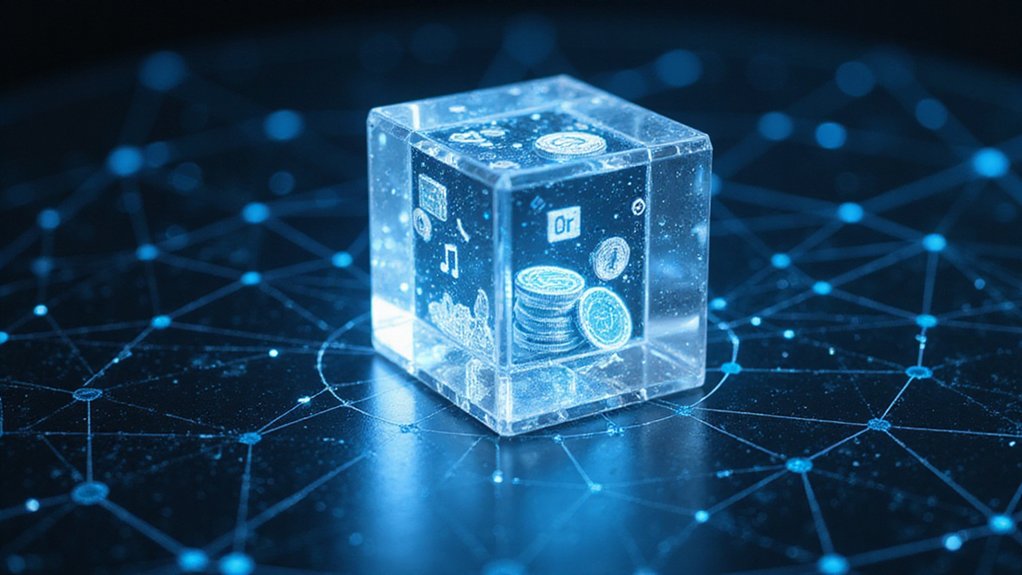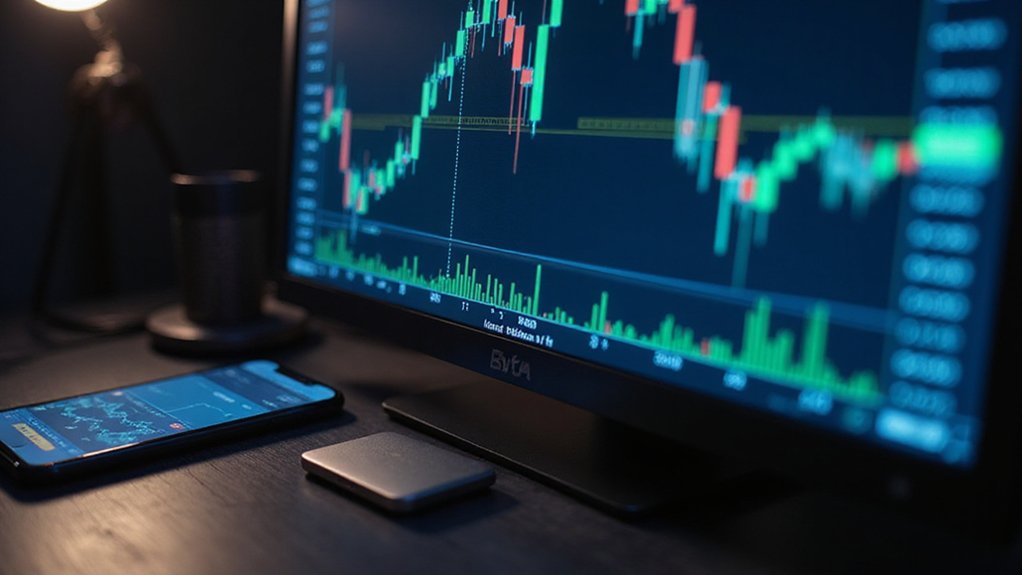A digital asset encompasses any intangible item with identifiable value existing in electronic form. These range from mundane spreadsheets to blockchain-secured cryptocurrencies and NFTs—all untethered from physical constraints yet increasingly central to modern economies. Digital assets must be discoverable, transferable, and (somewhat ironically) possessable without traditional possession. Their value derives from utility, scarcity, or sentiment, while ownership constitutes peculiar rights requiring specialized frameworks for taxation and estate planning. The rabbit hole of digital ownership goes considerably deeper.

In the increasingly dematerialized landscape of our modern economy, a digital asset stands as the quintessential embodiment of value untethered from physical form.
These intangible possessions—ranging from mundane spreadsheets to byzantine cryptocurrency tokens—must fulfill several criteria to merit the designation: they must be identifiable, discoverable, and possess transferable value.
The contemporary understanding of digital assets has expanded exponentially since blockchain technologies introduced unprecedented possibilities for ownership verification and transfer mechanisms.
The taxonomy of digital assets encompasses an ever-expanding universe of digital artifacts: photographs, documents, audio recordings, proprietary software, and—perhaps most controversially—tokenized representations of both digital and physical property.
Since Bitcoin’s 2009 genesis block, cryptocurrencies and non-fungible tokens have transformed what once seemed ephemeral into assets with tangible market values (and volatility that would make traditional market makers blanch).
These assets reside not in vaults but on hard drives, smartphones, and distributed ledgers.
Ownership of digital assets constitutes a peculiar form of property rights—one where possession and control diverge in ways unimaginable with physical goods.
The value proposition may be purely monetary or derive from utility, sentiment, or scarcity.
Blockchain technology has revolutionized this ownership paradigm, rendering transparent what was once opaque: the provenance and transaction history of digital goods.
Creation of these digital assets often occurs through the minting process, which registers new tokens or coins on a blockchain, enabling their circulation within the digital economy.
The implications extend beyond individual portfolios into institutional frameworks.
Corporations leverage digital assets for branding and intellectual property, while governments increasingly digitize everything from voting records to identity verification systems.
This digitization of value has accelerated dramatically with remote work adoption and decentralized finance innovations.
Regulatory frameworks continue evolving to address the unique challenges these assets present.
The Internal Revenue Service treats these electronic stores of value as property for taxation, not as currency, requiring careful reporting of any transactions on federal tax returns.
Tax authorities now scrutinize digital holdings with increasing sophistication, while estate planning must account for the posthumous disposition of one’s digital footprint.
As cryptographic security and tokenization technologies mature, the distinction between physical and digital assets grows increasingly academic—a transformation that continues redefining our relationship with ownership itself.
These assets are so deeply integrated into modern existence that disengaging from them would require completely cutting off devices and disconnecting from the internet entirely.
Frequently Asked Questions
How Can I Protect My Digital Assets From Unauthorized Access?
Organizations can protect digital assets through layered security measures.
Strong password policies and multi-factor authentication form the first defense, while regular software updates eliminate exploitable vulnerabilities.
Encryption renders data useless to unauthorized parties, particularly when combined with robust key management practices.
Granular access controls, vigilant user monitoring, and thorough security training complete this defense matrix.
(The financial sector, where digital assets often represent substantial value, finds these measures not merely prudent but essential—a curious understatement in an era of sophisticated cyber threats.)
Can Digital Assets Be Inherited After Death?
Digital assets can indeed be inherited after death, though the process isn’t straightforward (as with most matters involving posthumous affairs).
While outright-owned assets like cryptocurrencies and original content can be bequeathed through proper estate planning, assets governed by license agreements—think music libraries and e-books—often present inheritance limitations.
Service providers’ terms frequently override traditional wills, making digital inheritance tools like Google’s Inactive Account Manager increasingly essential.
The legal landscape remains rather patchwork, with inheritance rights varying dramatically by jurisdiction.
What’s the Difference Between Digital Assets and Cryptocurrency?
While all cryptocurrencies are digital assets, not all digital assets are cryptocurrencies—a distinction that seems to confound even seasoned investors.
Cryptocurrencies function specifically as decentralized financial instruments operating on blockchain technology, serving as mediums of exchange or stores of value.
Digital assets, however, encompass a broader universe of valuable electronic items—from mundane documents and family photos to tokenized real estate—many of which lack cryptocurrency’s characteristic liquidity and financial purpose.
Are Social Media Accounts Considered Digital Assets?
Yes, social media accounts are indeed considered digital assets.
They possess both sentimental value (containing personal memories, photographs, and correspondence) and, in some cases, financial worth (particularly for influencers or business accounts).
Estate planning increasingly recognizes their significance, recommending explicit instructions for posthumous management.
Platform policies vary wildly regarding account inheritance—Facebook offers memorialization options, while others simply terminate accounts upon death—making advance planning for these digital footprints particularly prudent.
How Do Businesses Value Their Digital Assets?
Businesses employ three primary valuation methodologies for digital assets: the asset approach (calculating net value after liabilities), market approach (comparing to similar assets or transactions), and income approach (discounting projected cash flows).
With FASB’s new fair market value reporting requirements commencing in 2025, companies must increasingly quantify these previously nebulous holdings.
Industry-specific considerations—particularly for blockchain-based assets—further complicate valuations, while persistent challenges include market volatility and the intangible nature of digital properties that resist traditional assessment frameworks.









